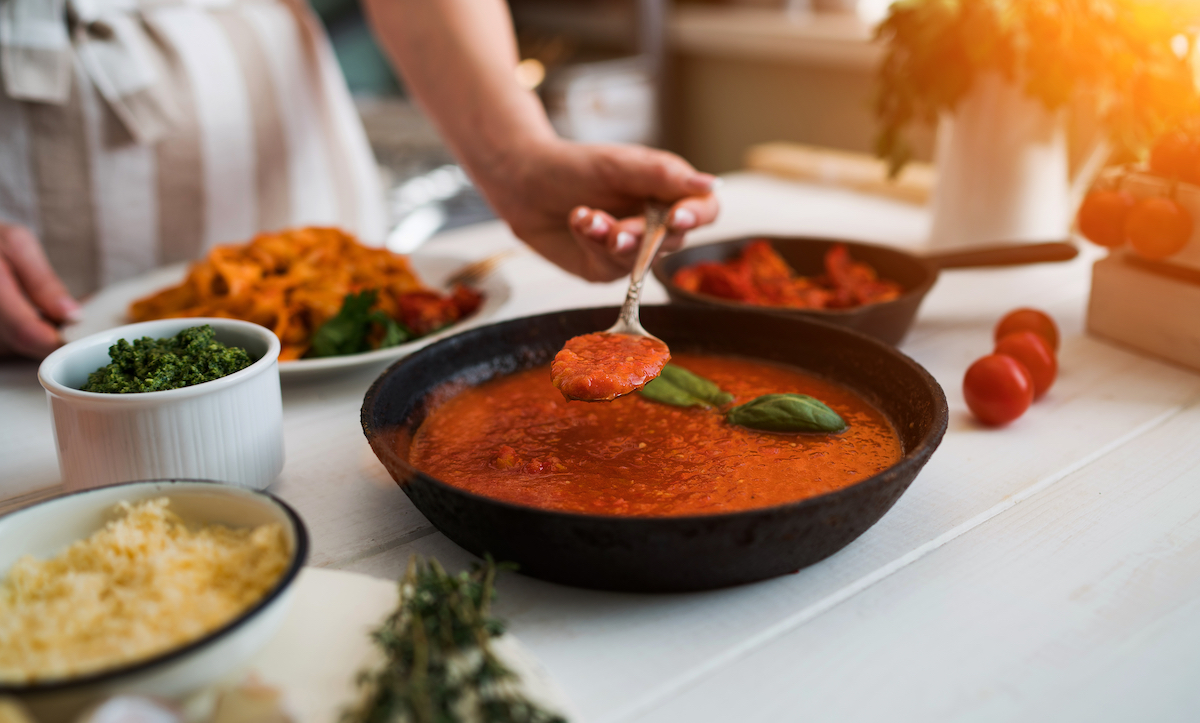Carbone Fine Food CEO: Inflation Hurts Middle-Tier CPG Brands Most

As consumers adjust their spending in response to inflation, Carbone Fine Food is seeing middle-tier consumer packaged goods (CPG) get edged out by budget options while higher-end players continue to find their audience.
In an interview with PYMNTS, Eric Skae, CEO of the brand, which is the CPG offshoot of famed New York City Italian restaurant Carbone, discussed how he sees inflation affecting grocery shoppers’ behaviors.
“I wouldn’t want to be in the middle today. I’d want to be out there on the low or the high. I think the middle is getting squeezed in CPG in general,” Skae said, later adding, “when times are tight, you’re either going low, or if you don’t have those restrictions, you’re going high. You just don’t have that consumer that’s going into the middle.”
Many consumers are changing their grocery spending habits amid inflation. According to data from the May installment of PYMNTS’ Consumer Inflation Sentiment series, “Consumer Inflation Sentiment Report: Consumers Cut Back by Trading Down,” which drew from an April survey of more than 2,000 U.S. consumers, 57% have cut back on nonessential grocery purchasing. Plus, 47% of consumers have switched to merchants that offer better prices for at least one grocery product.
Additionally, PYMNTS research found that many grocery shoppers make decisions about where they will shop based on deals and prices. For the study “Consumer Inflation Sentiment: The False Appeal of Deal-Chasing Consumers,” PYMNTS surveyed more than 2,100 U.S. consumers about inflation’s effect on their shopping habits and relationships with retailers. The results revealed that 44% of grocery shoppers are deal chasers, willing to go wherever they will get the best price.
Grocers continue to see consumers shifting to private-label products and trading down from higher-end merchants.
On the upper end, Skae noted, the kinds of consumers who would spring for a higher-priced sauce before this inflationary period continue to want high-quality options even amid economic pressures.
“I will hear at times, ‘I will not pay $9.99 for a sauce,’ but I think that’s the reality of a $9.99 sauce — no matter what the economic climate is, you’re going to have a certain consumer that buys it, and a certain consumer that just won’t spend that much,” Skae said.
Many consumers continue to find areas where they are willing to indulge even in the face of budgetary constraints. For instance, research from PYMNTS’ study, “New Reality Check: The Paycheck-to-Paycheck Report – The Generational Deep Dive Edition,” created in collaboration with LendingClub, which drew from a survey of more than 3,300 U.S. consumers, revealed that 63% had spent $100 or more on a nonessential item or service in the last three months. Even those without a financial safety net continued to prioritize these luxuries, with 58% of consumers who live paycheck to paycheck having done the same.
Plus, some consumers are trading down from restaurants to grocery, willing to spend a little more on higher-end products to ease the transition.
“During the recession, people cook at home more, and they cook better, and that trend just continues,” Skae said. “Even while people are going out to restaurants more, … people are still trading up, in the pasta sauce category at least.”
